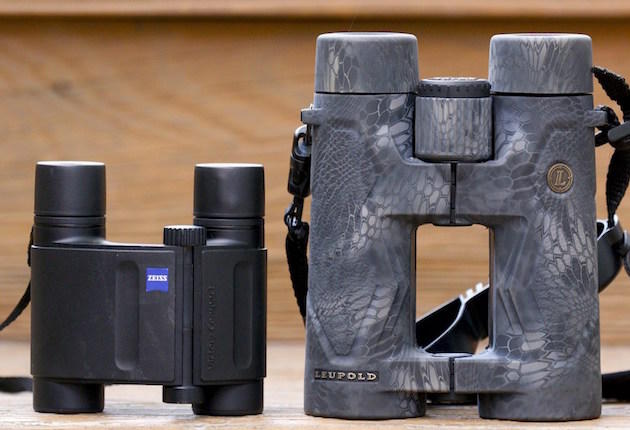I guess we, the buying public, are to blame. We’ve got that all-American “bigger is better” syndrome. But optics manufacturers should know better. Ten-power pocket binoculars just aren’t all that effective.
Neither are 8X.
The precise definition of “pocket binocular” is vague, but I think you know one when you see one. It’s generally small enough to slip into a standard shirt breast pocket, not much bigger than a loathsome pack of cigarettes. (Journalists are still allowed to use the word “cigarette” as long as they clarify it with an adjective like evil, heinous, loathsome.)
To reach this convenient, diminutive size, objective lenses diameter must be 25mm or smaller. That, of course, means they aren’t letting Las Vegas levels of light into the instrument. No problem — unless you make the magnification too powerful. And they all make the magnification too powerful!
Increasing magnification in a binocular reduces the quantity of light that exits each eyepiece via a tiny aperture known as the Exit Pupil (EP.) You can see these EPs when you hold a binocular at arm’s length and look at the eyepieces. Those bright little circles you see are the EPs. They are significant because they correlate to your own pupils, which dilate from about 2.5mm in bright sunlight to 7mm in the dark.
If a binocular EP is smaller than your pupil, you don’t take in as much light as you could, leading to a dim view of the world. If EP is larger than your pupil, you get as much light as you can take in. The extra fringe just bounces off your iris. This would seem a waste, but it offers a nice side benefit: you can position your eyes slightly off center of the optical axis and still see a full view without that annoying edge shadow leaning in. Nice.
Now here’s the rub: EP diameter is determined by objective lens diameter divided by magnification. So, a 25mm objective divided by an 8-power eyepiece produces a 3.1mm EP. At 10X this would be a narrow 2.5mm EP. Theoretically, this is all you need during good daylight when your pupils are constricted to 2.5mm anyway. Realistically, you get frustrated trying to position that binocular perfectly to avoid edge shadowing. You adjust the span, lean closer to the eyepieces, smudge them with your eyelashes, back off, try again and quickly tire of using the durned things.
And once the sun sets and your pupils dilate to let in more light, your binocular’s EPs don’t …
For the rest of the story, visit Ron’s new and improved website today! For more information on choosing a binocular, watch this video tutorial from Ron’s YouTube page below.

